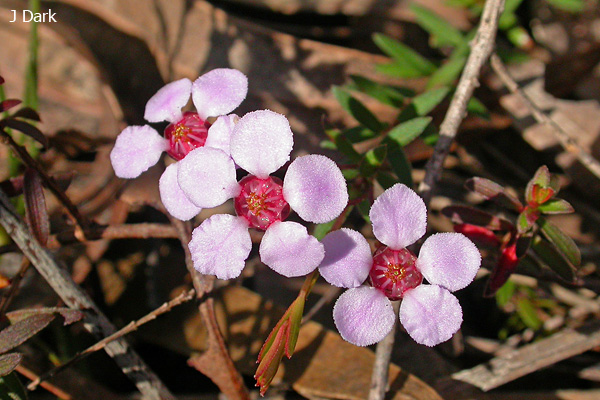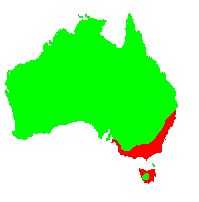General Description:
George Bentham in 1867 established a broad concept for the genus Baeckea but in recent years studies have shown that, because of differences in the group, many Baeckea species should be placed into other genera, including Ochrosperma, Triplarina, Babingtonia, Euryomyrtus, Kardomia, and Sannantha. In 2001, M.E. Trudgen reinstated and revised the genus Euryomyrtus which consists of 7 species – the revision reclassifies the species formerly known as Baeckea ramosissima as Euryomyrtus ramosissima. Further information on the taxonomy of the genus Baeckea and related plants can be found in the “Background” tab on the Geraldton Wax and Relatives page.
Euryomyrtus ramosissima is a small, often semi-prostrate shrub from 0.2 to 1 metres high by a similar width. It has linear to narrowly oval-shaped leaves 3-10 mm long by 1-3 mm wide. The small tea tree-like flowers are 5-10 mm in diameter, white to deep pink in colour. Flowering occurs from late winter to early summer.
Two subspecies are recognised: subsp. ramosissima and subsp. prostrata, the latter having generally smaller, white flowers and a prostrate or decumbent habit, although forms of subsp. ramosissima with a prostrate habit are also known.
A number of forms of this species are in cultivation – the most commonly grown form being a small, semi-prostrate plant with pink flowers. It is an excellent species for a rockery and may self layer by forming roots at the leave nodes. It must have well drained soils and prefers a position in full sun or semi shade. It is tolerant of at least moderate frosts and responds to pruning to maintain a bushy habit.
Propagation from seed is reliable but seed is often difficult to obtain. The plant strikes readily from cuttings of firm, current season’s growth.

Euryomyrtus ramosissima
Photo: Jill Dark
 Australian Native Plants Society (Australia)
Australian Native Plants Society (Australia)